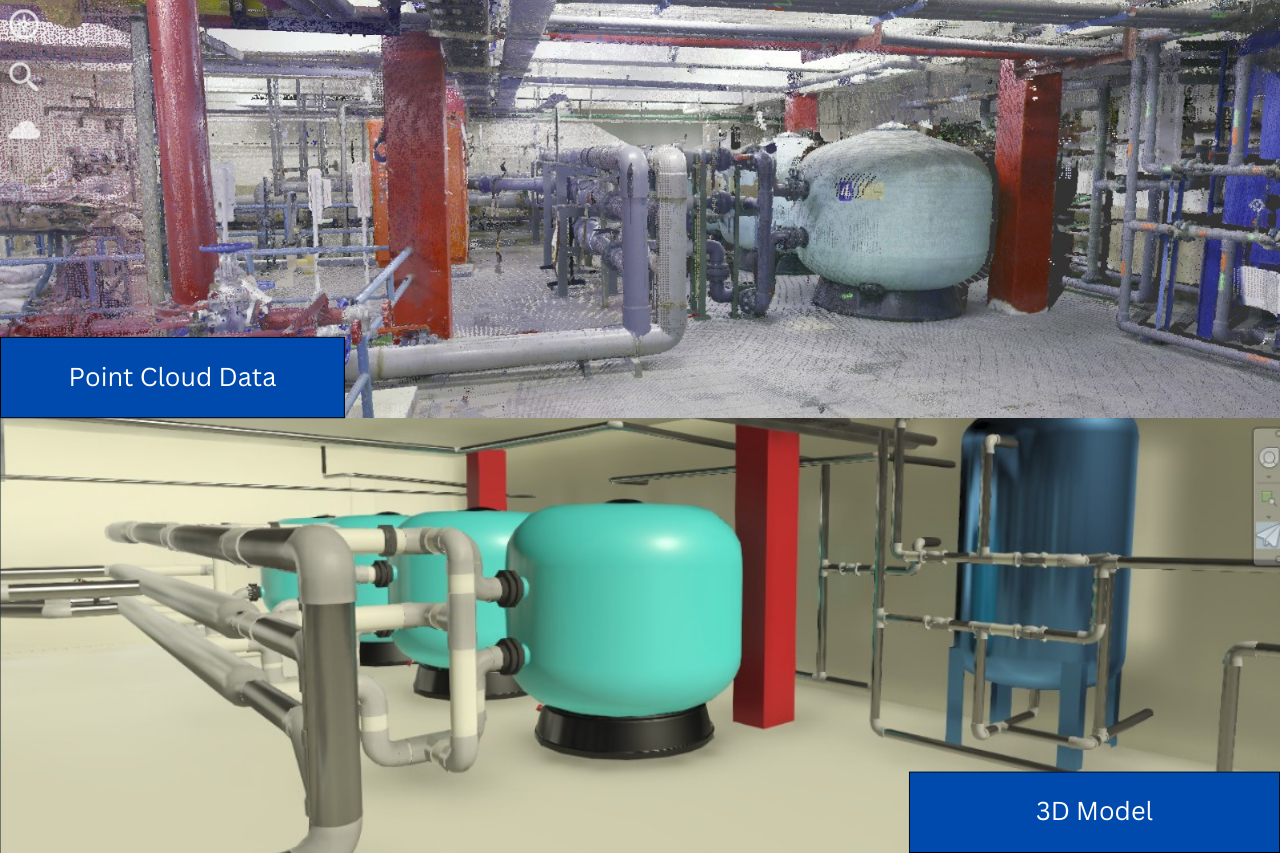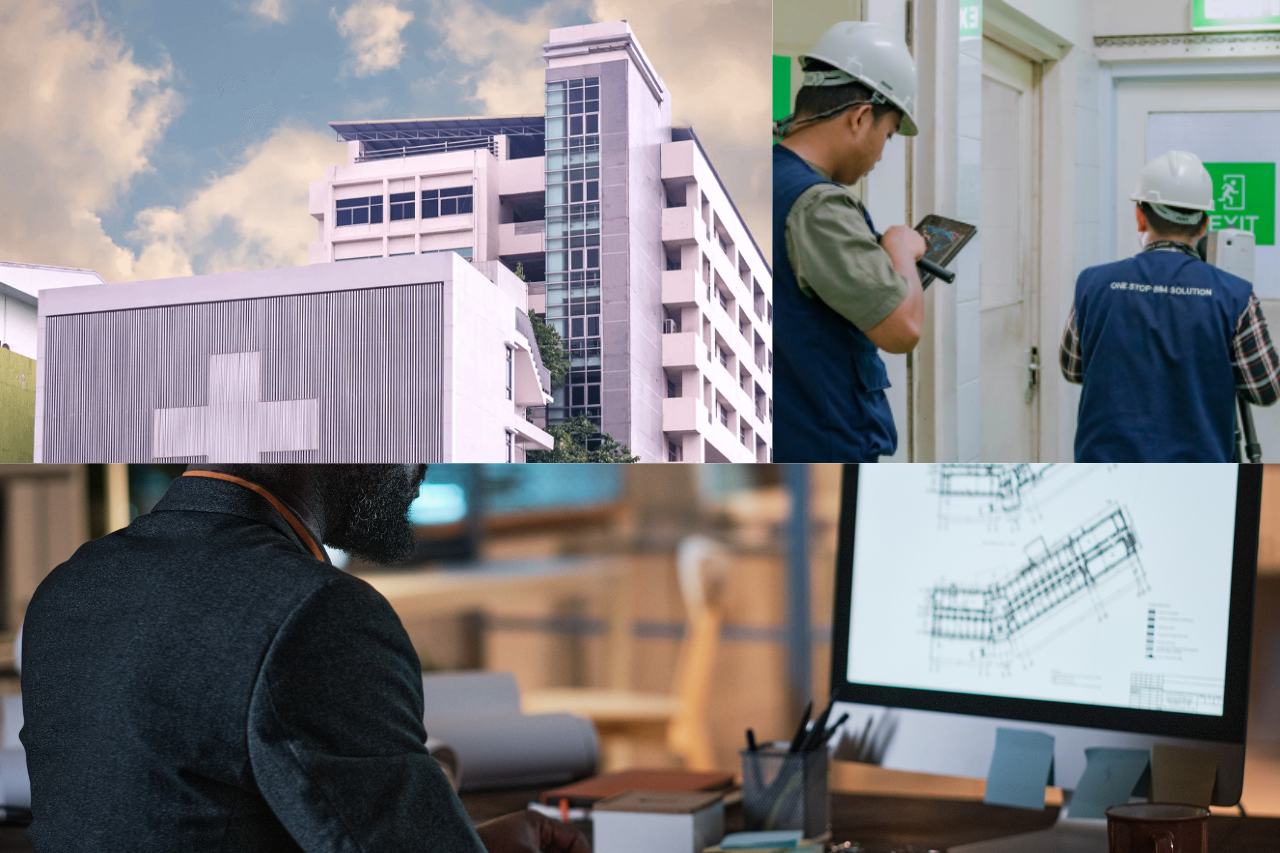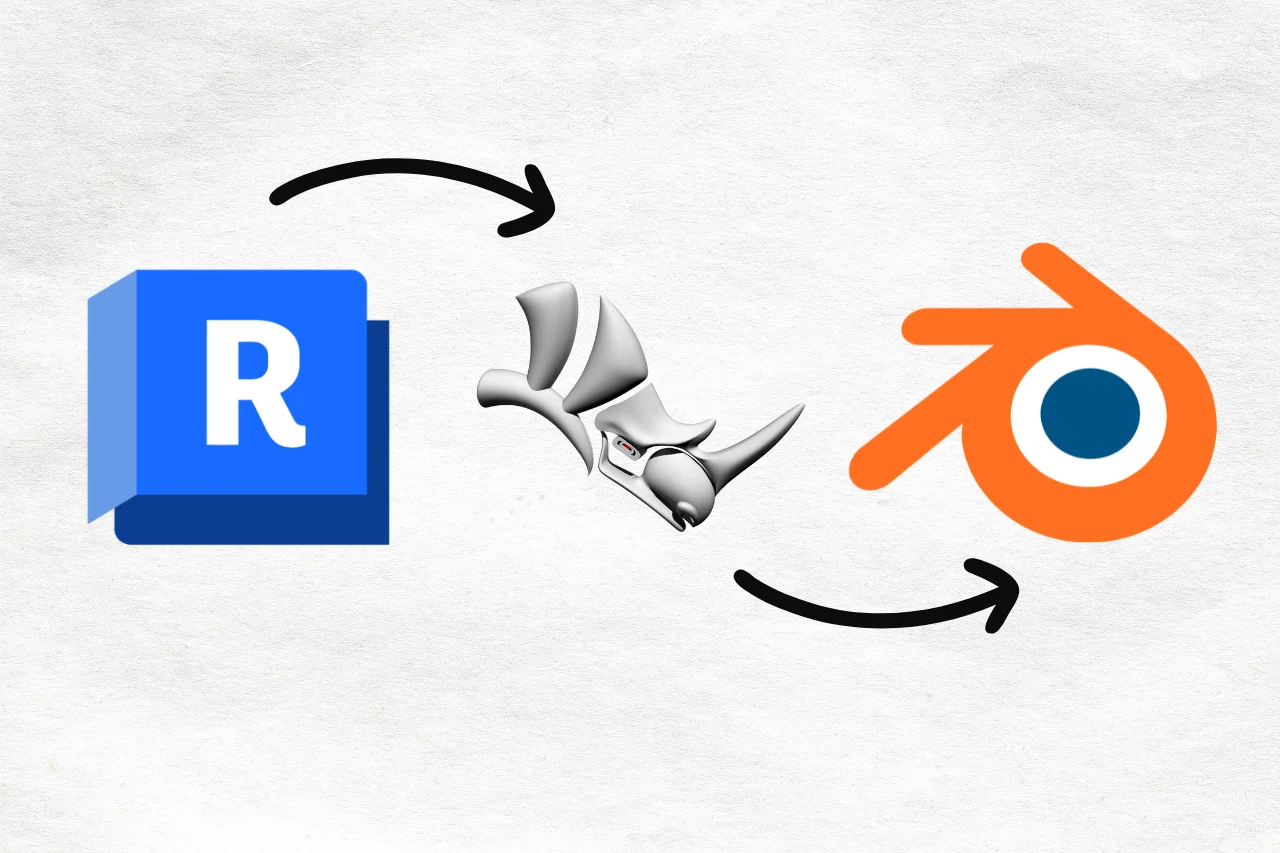One Stop BIM Solution
In the modern world of construction and architecture, Scan to BIM (Building Information Modeling) is becoming the primary method of digitizing existing buildings. The process involves laser scanning to capture the physical data of the building and convert it into an accurate digital model. This technology is helpful in building renovation, maintenance, and analysis without having to rely on old design drawings that may be outdated or incomplete.
To perform Scan to BIM, different types of scanning tools are used. Commonly used technologies consist of static (terrestrial) and mobile scanners, each of which has advantages according to project needs.
1. Terrestrial Laser Scanner (TLS)
A Terrestrial Laser Scanner (TLS) is a laser scanning device that is fixedly mounted on a tripod or other structure. It works by emitting a laser beam that bounces off the object's surface and returns to the sensor to measure distance and form a highly detailed point cloud.
TLS advantages:
- High accuracy (up to millimeters)
- Suitable for building mapping, topography, and construction industry
- Can capture objects on a large scale with high detail
- Ideal for Scan to BIM, especially in digitizing existing buildings
Weaknesses of TLS:
- Inflexible as it must be installed in one place before scanning
- Longer data capture time compared to other methods
2. Mobile Laser Scanner (MLS) – Bergerak (Mobile)
Mobile Laser Scanner (MLS) is a laser scanning system that can move during scanning. This technology enables rapid data collection over large areas and has several types based on its method of use:
A hand-operated device used to capture objects on a small to medium scale, such as building interiors or complex architectural elements.
Advantages:
- Portable and easy to use
- Faster scanning process than TLS
- Suitable for hard-to-reach objects
- Can be used in Scan to BIM to capture interior details
Weaknesses:
- Lower accuracy compared to TLS
- Susceptible to vibration and operator movement
b. Backpack Scanner
A laser scanning system mounted on a backpack and carried by the operator. Suitable for scanning environments that are difficult to reach by vehicle or tripod.
Advantages:
- Flexible for complex areas such as passages, tunnels, and forests
- Capable of capturing data with wider coverage than handhelds
Weaknesses:
- Lower accuracy than TLS due to operator movement
- Requires more frequent calibration for optimal results
c. Vehicle-mounted Scanner
Vehicle-mounted systems such as cars or drones for scanning large areas, such as roads, urban areas, and mines.
Advantages:
- Capable of covering large areas in a short period of time
- Effective for mapping corridors such as roads and railways
- Useful in Scan to BIM for large-scale city or infrastructure modeling
Weaknesses:
- Lower accuracy compared to TLS due to moving equipment during scanning
- Higher cost compared to other methods
Conclusion
The selection of the right laser scanning technology depends on the project needs. If high accuracy is required for stationary objects, TLS is the best choice. For more flexible and fast scanning needs, Mobile Laser Scanner with its various forms (handheld, backpack, vehicle-mounted) can be a solution.
With the rapid development of technology, laser scanning continues to innovate and become an important part of various industries such as construction, architecture, and archaeology. In the context of Scan to BIM, this technology enables the transformation of physical data into digital models that are very useful for more accurate building design, maintenance, and analysis.



.png)



